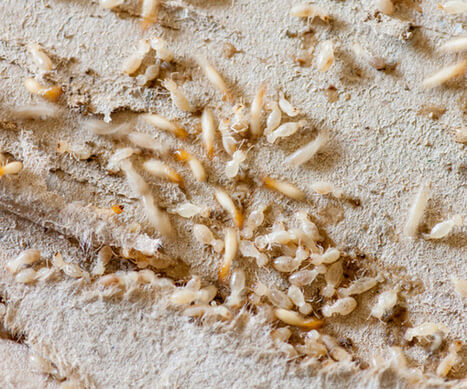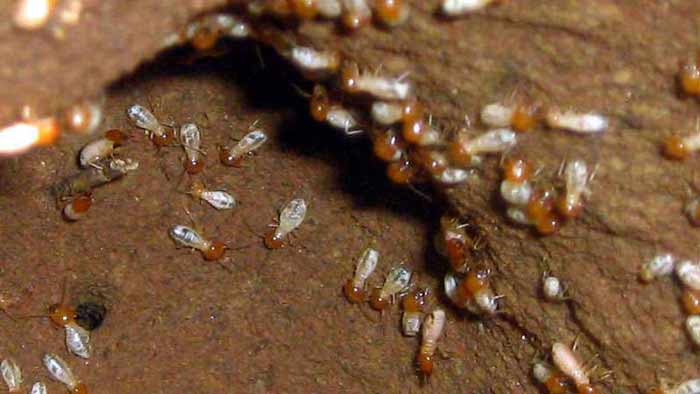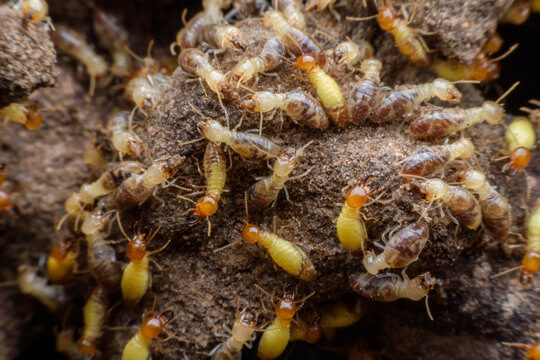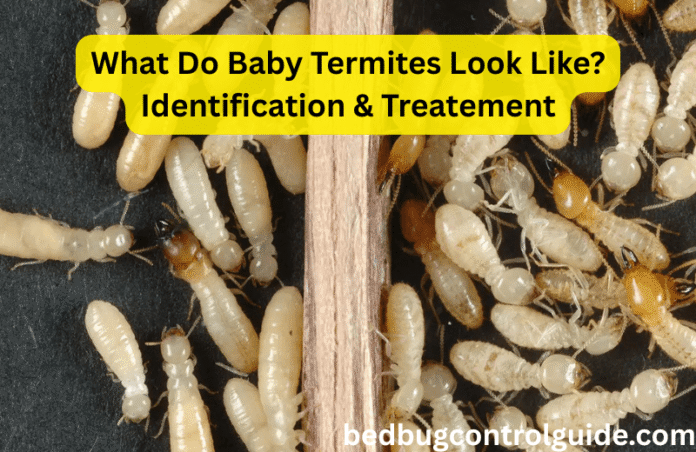If you have spotted suspicious insects around your home lately, you might wonder, “What do baby termites look like?” These tiny creatures, known as termite nymphs, could be the early signs of a bigger problem—an infestation. To protect your home from costly damage caused by termites, it’s essential to know how to identify baby termites, understand how they differ from ants, and learn effective treatment options. Below, we’ll cover everything you need to know about termite identification in 2025 and how to treat termites effectively.
What Do Baby Termites Look Like?
Baby termites, also called nymphs, are small, pale insects that resemble tiny white ants. Though they aren’t capable of causing damage themselves, they will eventually grow into workers, soldiers, or reproductive termites, which can wreak havoc on your home. Here are some key features to identify them:
- Size and Shape: Baby termites are very small, about 1–2 millimeters long—smaller than a grain of rice. Their bodies are segmented and soft.
- Color: They are typically white or cream-colored with a translucent appearance.
- Antennae: Unlike ants, baby termites have straight, beaded antennae.
- Waist: They have thick waists, unlike ants that have thin, pinched waists.
- Wings: Baby termites don’t have wings, which differentiates them from the winged reproductive adults in a termite colony.
Baby termites are usually hidden deep within the nest, being cared for by the worker termites. Spotting them often means there’s a larger colony nearby. Read our latest post on Tiny Baby Termites? Everything You Need to Know in 2025
Baby Termites vs. Ants
It’s easy to confuse termites with ants, especially when it comes to baby termites. However, there are some clear differences:
- Body Shape:
- Termites have a straight body with no defined waist.
- Ants have a narrow, pinched waist.
- Antennae:
- Termite antennae are straight and beaded.
- Ant antennae are bent or elbowed.
- Wings:
- If you see winged insects, check their wings. Termites have two pairs of wings of the same size. Ants’ wings are different sizes.
- Color:
- Baby termites are pale or white, while ants are typically darker in color.
If you’re unsure whether you’re dealing with ants or termites, look for other signs of termites, such as mud tubes, discarded wings, or wood damage. These clues can help you figure out if termites have invaded your home. Follow Us on Facebook for the latest updates.
Signs of Termite Activity

Detecting termites early can save you from severe damage. Here are some common signs of termite activity to watch out for:
- Mud Tubes:
Termites build mud tubes to travel between their colony and food sources. These tubes are common on walls, beams, or crawl spaces.
- Discarded Wings:
After reproductive termites, or swarmers, finish mating, they shed their wings. You might find these tiny wings near windows, doorways, or light sources.
- Hollow-Sounding Wood:
Knock on wood surfaces around your home. If they sound hollow, termites might be eating away from the inside.
- Frass (Droppings):
Termite droppings look like small piles of wood dust or dry pellets. These can often be found near baseboards or wooden furniture.
- Paint or Wallpaper Damage:
Bubbling or peeling paint and discolored walls might signal termite activity.
If you spot any of these signs, it’s essential to act quickly to prevent further damage.
How to Treat Baby Termites Effectively

Treating termites in 2025 has become more advanced, with various effective and environmentally friendly options. Whether you choose a DIY method, an eco-friendly solution, or professional pest control, here’s how to get rid of termites.
DIY Termite Treatments
While hiring a professional is usually the best option, there are some steps you can take to deal with a minor infestation:
- Use Termite Baits:
Termite bait systems work by attracting termites to eat a slow-acting poison and sharing it with the colony. Over time, this eliminates the termites.
- Apply Liquid Termiticides:
These work as a barrier by killing termites that come in contact with it. Liquid treatments should be applied around the home’s foundation.
Keep in mind that DIY treatments may not be effective for severe infestations. If the termites come back, you’ll need professional help.
Eco-Friendly Termite Treatments
Environmental safety is a top priority in 2025, and pest control companies now offer greener solutions:
- Thermal Imaging for Detection:
Professionals use technology like thermal imaging to detect termites hidden inside walls without invasive drilling.
- Entomopathogenic Fungi:
Natural treatments like fungi specifically target termites while being safe for humans and pets. These biological agents infect and eliminate termite colonies.
- Bait Stations:
Modern bait stations use less toxic materials to kill termites without harming other wildlife.
Professional Baby Termite Treatment Services

Professional pest control services are the most reliable solution for dealing with termites. Expert exterminators, like Terminix, use a combination of treatments tailored to your home’s needs.
Here’s what you can expect from professional termite treatment:
- Inspection:
The first step is a thorough inspection to identify the type and size of the infestation.
- Customized Treatment Plan:
Based on the inspection, pest control experts develop a specific plan. This might include baiting, liquid termiticides, or fumigation.
- Preventative Measures:
Professionals often install termite barriers or monitoring systems to keep termites from returning.
While professional services require an upfront investment, their comprehensive approach ensures long-term protection for your home.
Preventing Termite Infestations
Once you’ve treated a termite infestation, prevention is key to ensure they don’t return. Follow these tips to keep your home termite-free:
- Remove any wood debris or cardboard from around your home.
- Fix leaks immediately, as termites are attracted to moisture.
- Use treated wood for construction projects.
- Seal cracks in your home’s foundation and walls.
- Schedule annual inspections with a pest control company. Early detection can save you money and hassle.
Conclusion
If you’ve been wondering, “What do baby termites look like?” this guide should help you identify and address the issue. Baby termites are tiny, pale insects with straight antennae and thick waists. Learning the differences between termites and ants, recognizing the signs of an infestation, and using effective treatment options can save you from costly repairs. Whether you choose DIY methods, eco-friendly solutions, or professional services, quick action is the key to protecting your home.
FAQs
How do you identify a baby termite?
Baby termites are white or cream-colored, about the size of a grain of rice, and have straight, beaded antennae. They do not have wings.
What bug can be mistaken for termites?
Ants are often mistaken for termites. To tell them apart, look at their waists (termites have thick waists) and antennae (termites’ antennae are straight).
What to do if you see baby termites?
If you see baby termites, contact a pest control professional immediately. Their presence indicates a nearby termite colony.
Do baby termites bite humans?
No, baby termites don’t bite humans. They don’t have the ability to feed themselves at this stage.
Can termites go in your bed?
Yes, termites can infest furniture, including beds, especially if they are made of wood. Keep your sleeping area clean and inspect it regularly.
Can termites enter the human ear?
It’s highly unlikely for termites to enter a human ear. They are not aggressive and avoid human contact.



